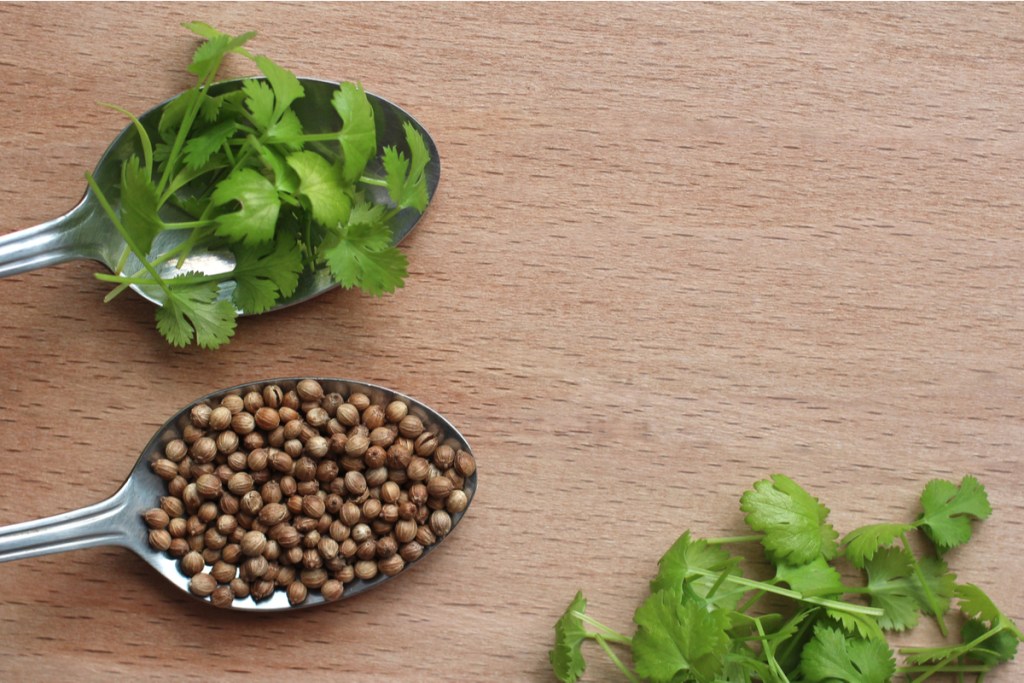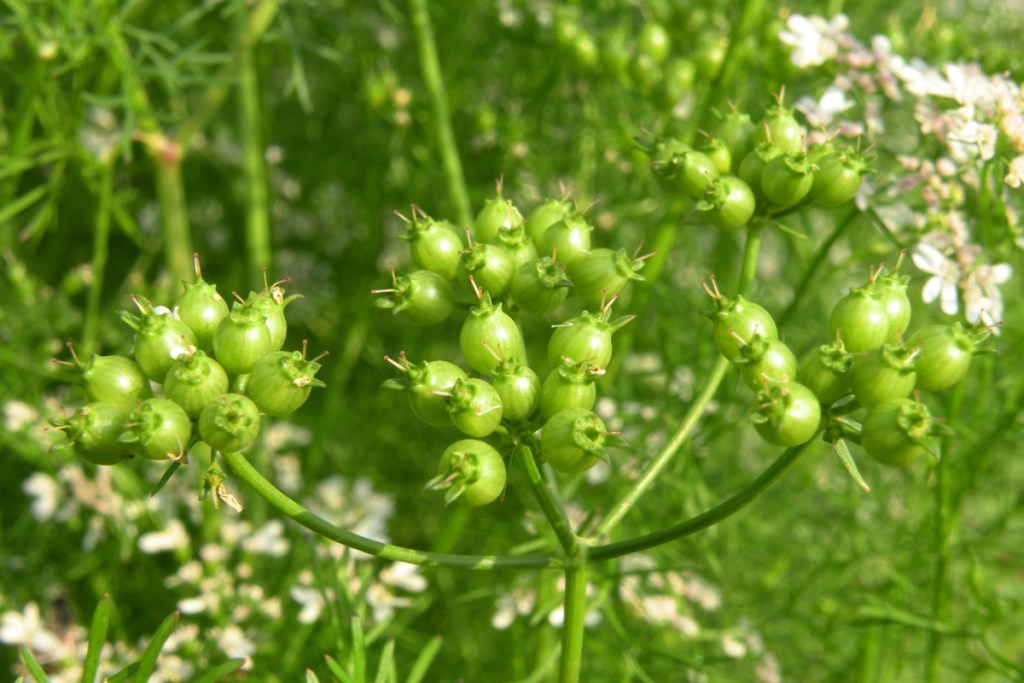Cilantro and coriander are both popular herbs grown at home and used in cooking. Cilantro has bright green, flat leaves (that somewhat resemble Italian parsley) and is known to many as “the herb that tastes like soap.” Coriander seeds come from the same plant as cilantro, which is scientifically known as Coriandrum sativum. What we call cilantro is actually the coriander plant, and to many, the dual-purpose of this herb can cause a bit of confusion.

It’s surprisingly easy to confuse the two
Because they come from the same plant, it’s both very easy to confuse them and very easy to be confused about why they aren’t called the same thing. They come from the same plant, right? Cilantro is not only the leaves of the plant but the stems as well, and coriander comes from the seeds. Why are the stems and seeds called cilantro instead of coriander if it’s a coriander plant?
Well, the naming convention happens to be regional. In North America, these two herbs have different names: cilantro and coriander; however, in other parts of the world, the stems and leaves are known as coriander and the seeds are coriander seeds (and cilantro is actually Spanish for coriander).
The taste of coriander versus cilantro
Both cilantro and coriander have a citrusy taste to them. To some people, cilantro tastes more like soap, which has to do with the compounds it’s made of. To others, it has a very strong citrusy taste that complements certain dishes. Coriander, on the other hand, has a floral or lemon taste that is entirely different from the leaves. For that reason, the two should never be substituted for each other. Even though they’re both parts of the same plant, they’re unique herbs with entirely different uses.
What’s the best use for coriander?
Coriander seeds are often used in rice dishes, curries, soups, and pickling recipes. They can be used whole, crushed, or ground up, depending on what you’re making (typically a recipe will tell you which is needed). The flavor of this herb lends itself more to warm spice dishes. If you’re growing coriander at home, you can easily make your own crushed or ground version, too. It helps to have a mortar and pestle on hand. Due to the method of harvesting, the seeds will always be dry (and prepared for storage!) before you use them.
When would you use cilantro?
Fresh cilantro — chopped or whole — is used commonly in Asian and Mexican cuisine. Because the stem is edible and has a lot of flavor, too, you can chop it up with the leaves or use the whole sprig as a garnish for your dish. Salsas, sauces, spreads, and dips are some of the best recipes to add cilantro to.
Be wary when cooking with cilantro, though. It doesn’t hold its flavor well and should be added toward the tail end of the recipe. It’s equally important, too, to know who you’re cooking for. Because many regard cilantro as having a soapy taste, it can easily make or break a dish.

Growing cilantro to encourage seeds
The best way to encourage seeds on any plant — indoor or outdoor — is to provide the best care possible. If you’re growing cilantro outdoors, you may want to grow it in containers instead of garden beds anyway, so that you can bring it indoors for the winter and still enjoy having the fresh herb on hand.
Cilantro prefers bright indirect lighting and loathes direct light, which can easily burn and harm the delicate herb. An east-facing window, patio, or garden bed is a great option, so long as it’s a spot where the cilantro can have shade from afternoon light.
As far as soil and water go, you should make sure to use a well-draining soil so that the roots don’t sit soggy. The better the drainage, the less prone your herb is to root rot. The soil should be kept regularly moist, watering only when the top inch or so is dry. Do your best to not let the plant dry out completely.
If you’re interested in growing both coriander and cilantro, you should consider having more than one plant: at least one specifically for coriander and one for cilantro. That way, you can tend to one and let it flower and go to seed without the risk of it dying from over-harvesting. The other can be harvested as-needed for cilantro, taking care never to harvest more than half the plant at a time to avoid stress.
Will cilantro grown indoors flower and seed?
Yes! Cilantro is a popular herb for indoor herb gardens, and it just so happens to be self-seeding. This means you won’t have to choose whether you want your potted cilantro indoors or outdoors (unless space is a concern) because you’ll be able to harvest coriander seeds either way. Having fresh cilantro around can add not only fragrant aromas to your home but expand the variety of meals you can make with your hard work.
Editors' Recommendations
- Beyond basil and cilantro, add these unique plants to your indoor herb garden
- Here’s how often you should be fertilizing your indoor plants
- Use these tips to start a successful indoor vegetable garden this winter
- 5 companion plants to keep your chive plants company
- The 5 best companion plants to grow alongside the dill in your garden



